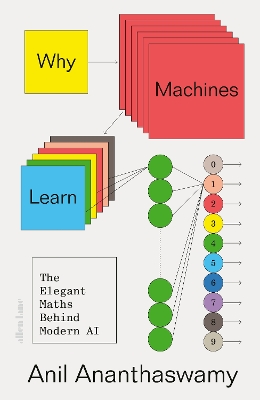Originally posted on my blog Nonstop Reader.
Why Machines Learn is a fascinating, thorough, and semi-accessible monograph on AI and how machine learning algorithms are changing -everything- in modern society, meticulously delineated by Anil Ananthaswamy. Due out 16th July 2024 from Penguin Random House on their Dutton imprint, it's 480 pages and available in hardcover, audio, and ebook formats. It's worth noting that the ebook format has a handy interactive table of contents as well as interactive links throughout. The ebook format's search function is also helpful for finding info and references (recommended).
The author does a very good job covering the background and development of machine learning and relates a lot of the human history and key players from the 50s to the current day. It's a timeline with an ever increasing pace and he draws a clear line from the creeping forward progress to the hurtling (scary) pace of the current day.
Oddly enough, the author doesn't speculate about the near (or far) future of AI and machine learning, and his insights would've been a valuable addition to the book. The specific mathematics included in the book were at an odd level as well; too simple for people conversant with the material, and probably too complex for non-math-inclined laypeople.
Although written in mostly accessible, non-rigorous language, it's meticulously annotated throughout, and the chapter notes will provide readers with many hours of further reading.
Four stars. Definitely a niche book, but well written and interesting. It would be an excellent choice for public library or post-secondary library acquisition, for home use, or possibly as adjunct/support text for more formal math/science history classes at the post-secondary level.
Disclosure: I received an ARC at no cost from the author/publisher for review purposes
Reviewed by annieb123 on
Reading updates
- 5 July, 2024: Started reading
- 5 July, 2024: Finished reading
- 5 July, 2024: Reviewed
